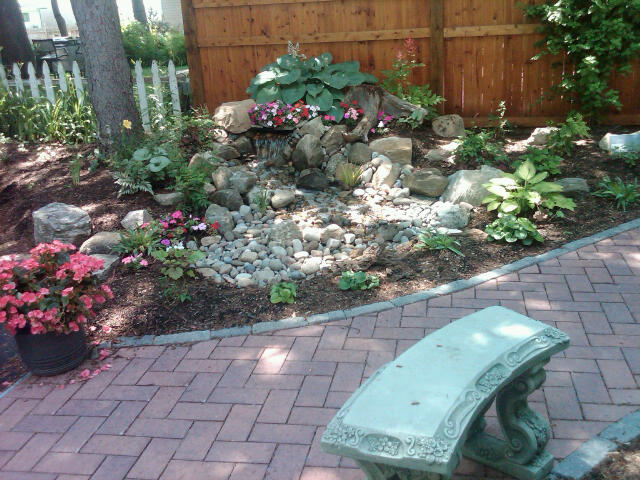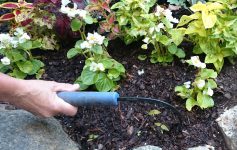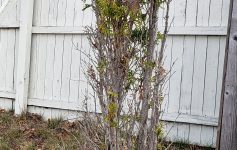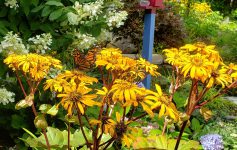Although the calendar indicates we are midway through the first month of 2015, I am continuing to list my garden New Year’s Resolutions. My baby boomer brain tends to integrate concepts better when I write them down. And yes…I am from the era when the teacher in grade school assigned you the old writing assignment I will not____ 100 times as punishment. Oh the nagging things that you remember.
So on I go on my second garden resolution for the year: respecting what mother nature hands you. This has become a formidable element in my work over the past 10 years. It serves as the core for my sustainable garden philosophy: Work with Mother Nature, not against! This has been a hard knock learn for me. I see a combination, style and arrogantly suggest I can do that…despite the natural order of things on my property.
Lets face it, today’s technology boasts, smart, efficient, time
saving. Whether it be hardscape, landscape or waterscapes, a design that respects the region is your first step in respecting nature. I always consider giving back rather than taking from the environment. We can select rainwater harvesting/storm water management technology, natural ecosystems that support healthy green space and plants that combine regional diversity. These three elements can help bring the high efficiency inside our homes to our outdoor landscapes.
A simple first step when selecting plants is reading that plant tag. I blogged about this a while back. A recent dialog with my trusted Saratoga Springs garden center resource reinforced the fact that folks very rarely read a plant tag. Critical information about cold hardiness and sun/shade requirements are found on the tiny tag. Acknowledging your plant site condition requirements is the basic practice of matching plant to what nature will hand you in your backyard. Combining the much touted native plants, along with my idea of nativores (plants that work and play well with others) Gives balance to the environment and less work out in your garden

Outdoor living experiences today have expanded well beyond the lawns and plots of soil based gardens. Enhancements like rainwater harvesting gardens and barrels can help us minimize the impact of urban impervious sprawl. Permeable hardscape surfaces (such as pathway rubble and manufactured permeable pavement blocks) also provide ways to manage and return rain to the ground versus rapidly running into our overtaxed roadways and antiquated underground collection systems. Water gardens designed using a natural ecosystem approach apply today’s knowledge and technology to “re-create” nature, attract wildlife, and provide the long standing garden tradition that encourages the spiritual element in our outdoor spaces.
Respecting nature is the key in 21st century gardening. It means making smart, educated choices in 2015. Next Resolution: 3.Use your failures to learn and grow!



